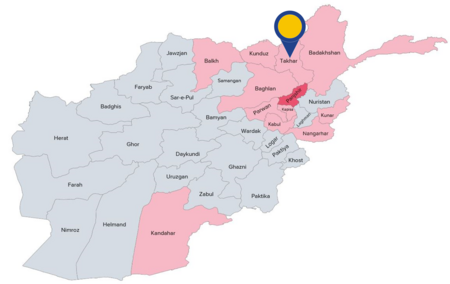COMMON ANALYSIS
Last update: January 2023

[Main COI reference: Security 2022, 4.32, pp. 184-188]
In May 2022, the activity of anti-Taliban forces reportedly had recently risen in some provinces, including Takhar.
During the reference period, ACLED recorded 199 security incidents in Takhar (average of 3.2 incidents per week), of which 103 were battles, 80 violence against civilians, 16 explosions/remote violence. Most incidents were attributed to Taliban forces and NRF, with some incidents also attributed to AFF, the ISKP and to unidentified armed group(s). According to ACLED, the security incidents in the province resulted in 265 fatalities, which included combatants and non-combatants.
UCDP recorded 77 security incidents in the period between 16 August 2021 and 22 October, resulting in 36 civilian deaths. Compared to population data from UNOCHA, this represented two civilian deaths per 100 000 inhabitants.
Examples of incidents included clashes between Taliban and NRF, the attack of NRF on Taliban bases, clashes between Taliban factions, the detention, torture and killing of civilians accused of association with NRF, the killing by the Taliban of members of the former security forces, such as a former soldier and a police officer, armed clashes between ISKP militants and Taliban forces in Taloqan city.
On 11 June 2022, armed clashes led to the closure of the Takhar-Badakhshan highway and on the same day electricity has been cut off in parts of Taloqon city due to the intense fighting.
From August to November 2021, 22 603 persons were displaced due to conflict. No displacement has been registered in 2022. IOM identified 29 503 IDP arrivals in Takhar in the period between August and December 2021. In the same period 73 421 IDPs returned to Takhar.
|
|
Looking at the indicators, it can be concluded that indiscriminate violence is taking place in the province of Takhar, however not at a high level. Moreover, a significant proportion of the civilian fatalities in the province is considered to be the result of security incidents of a targeted nature. Therefore, a high level of individual elements is required in order to substantiate subsidiary protection needs under Article 15(c) QD. |
